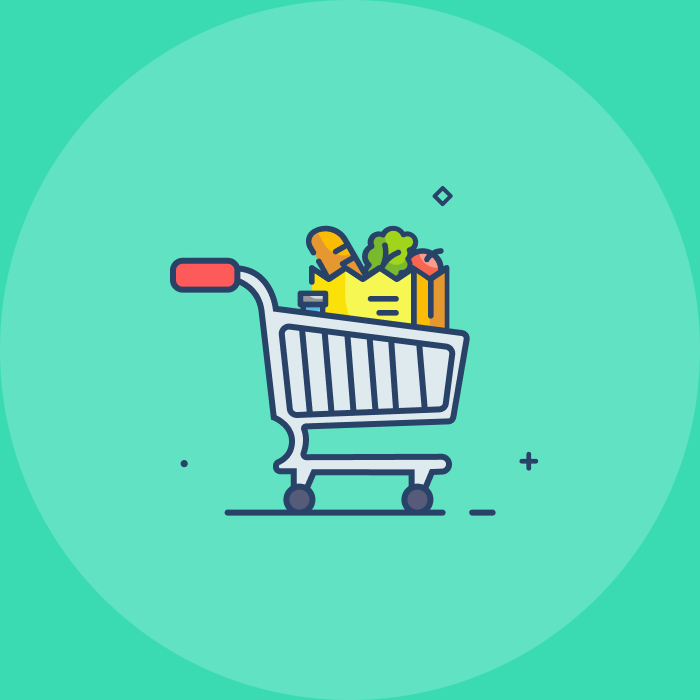To better understand this new e-commerce future and what retailers need to do to prepare for this pandemic, we’ll be looking at some key challenges, and grocery eCommerce trends that merchants need to keep in mind.
The grocery e-commerce industry is rapidly growing because of the pandemic. There is an overwhelming environment because of the dramatic effects of COVID-19. According to the Goldman Sachs report, online grocery will be the largest growth driver for e-commerce space in India.
This particular segment is expected to progress constantly, growing about 20 times over five years to reach $29 billion in size.(under $2 billion right now)
The reasons to shop online have changed from convenience and flexibility to personal health and public safety. Consumer loyalty to offline modes is swiftly changing to promoting e-tailers for catering to their needs.
In this article, we discuss how brands can tap into the growing opportunities in this sector early on by creating a supreme online presence.
1. Amazon and other marketplaces
Amazon is the leading place in the grocery sector because of soaring demand. This platform observed a 4x rise into “add to cart” and 1.3x spike in page views during the lockdown, particularly in India. This led to a 2x boost in sales in the post-lockdown phase. For grocery businesses, the key areas to focus on include:
- Distribution channels: To tap into this need, grocery retailers must explore choices like AmazonFresh (invite-only basis), Amazon Pantry, and Prime Now. Grofers and Bigbasket, which already accounts for 80% of the market, can also act as the alternatives.
Customers can benefit from a quicker distribution network provided by these options.
In India, grocery retailers can sell low margin products at a cheaper cost while having FBA benefits, with the invite-only delivery option and Multi-Seller Flex.
- Inventory requirements: Safety and quality of the packaging must be a top priority for grocery retailers. Other specifications such as expiration date, net weight, and dietary claims concerning possible food allergens, must be ensured by them.
If we consider the case of perishable products, the shelf life of the product becomes a critical factor in timely delivery.
- Pricing and promotions: Generally monthly expenses, including groceries, are planned in the first week of the month. Hence, marketers must focus on having competitive prices, setting coupons, and forming a quality ad strategy during this phase.
In India, Amazon offers Super Value Days, the first seven days of every month where grocery sellers benefit from added discounts, deals, and paid ads. Moreover, the ‘Subscribe and Save’ option helps in increasing the average cart value. This is an effective way to scale-up sales in the grocery category.
2. Website marketing
Marketplaces can offer endless opportunities, but a personal website can drive larger margins. It also gives you more power over consumer data and generates helpful insights to counter emerging trends. Following are the factors to consider while running an online grocery store:
- Organic search: Organic search is a widely used strategy to promote business in the virtual world. Usage of highly relevant keywords in your website’s content can help consumers find you seamlessly. Terms such as fresh, natural, and organic (as applicable)in titles are well-known for driving CTR.
Writing blogs and guest-posting on prominent websites can help attract potential customers. Collaborations with famous parties can act as a vote of confidence amongst loyal followers.
For example, collaborating with a famous chef or food blogger will help in ranking your store higher on SERPs. Also, executing a recipe composition, wherein the recipe page links to the product page can lead the consumer further into the conversion channel. If you supply to offline stores then add the store list along with the local schema.
- Paid traffic: Recurrent marketing ads are an excellent way to drive users to the website because of the set grocery shopping pattern in most households. Giving special coupons to the new users helps in incentivizing them to make their first purchase. For fresh produce, the average selling price is relatively low in some cases.
In this case, subscription models and brand awareness campaigns will lead to long term returns compared to product-driven ads. One more important point about the grocery segment is that the repeat order rate is quite high and, at times, you may incur a little loss in acquiring a customer.
- Engagement process: Improvement of the engagement process is the next step after generating relevant traffic to the website. Auto-complete searches and high-quality imagery plays a significant part here. For continued interest in your products, put forth key information such as nutritional facts, ingredients, and product availability.
- Quality conversions: Hassle-free checkout process along with flexible payment modes can generate quicker conversions. Retailers should account for the shipping cost in the product price itself instead of charging an additional shipping cost as that can lead to cart abandonment during checkout. Offering discounts to existing customers buying bulk items during checkout can increase the average order value for non-perishable products.
Social media platforms such as Twitter, Instagram, and Facebook can help drive consumers to your store. They can help establish a strong brand presence by strengthening customer relationships. For instance- sharing recipes, including ingredients, available at your grocery store can generate visits.
There is also an option of comments on your posts to complain or report an issue with your store. This opportunity can be used to address the questions and concerns of the customers.
The social media success of Whole Foods’ is based on its rapid response to customers’ feedback on Twitter and Facebook. They respond to approx 100 users each day, thus kick-starting growing conversations around the brand.
4. Usage of latest technology
According to Statista, over 60% of the cumulative e-commerce sales are generated from mobile channels, and a 73% boost is expected in 2021. This shows that PWA (progressive web apps) is becoming an essential feature in the competing market scenario. It provides users native app-like experience even with websites.
The grocery and food sector is one of the best examples of repeated buyers and PWA has the highest impact on websites with a high repeat rate. Increased speeds and higher conversion rates make PWA even more lucrative.
Additionally, for large brands, advanced features such as personalization, optimized search, and upselling applying machine learning and AI can exponentially improve the overall user experience.
Overcoming storage challenges for perishable grocery products is very crucial, along with the implementation of the aforementioned points. One way to do this is through well-equipped infrastructure, built-in inventory management API, and reliable mode of conveyance.
On the whole, e-tailers must take a more holistic approach while trying to imitate an in-store experience online. It is decisive that grocers focus on every facet of the journey, to keep the first-time purchasers devoted, through organic as well as paid mediums.
Formulate new solution strategies for marketplaces as well as your website to gain market share and dominate the space as a grocery retailer.
Subscribe to weekly updates
You’ll also receive some of our best posts today






